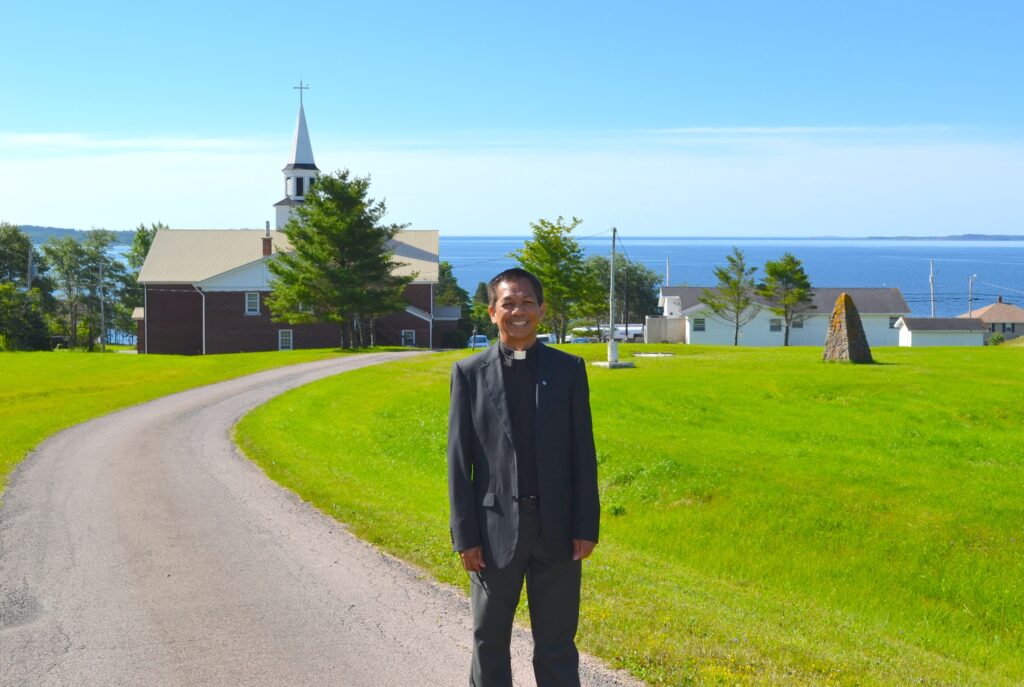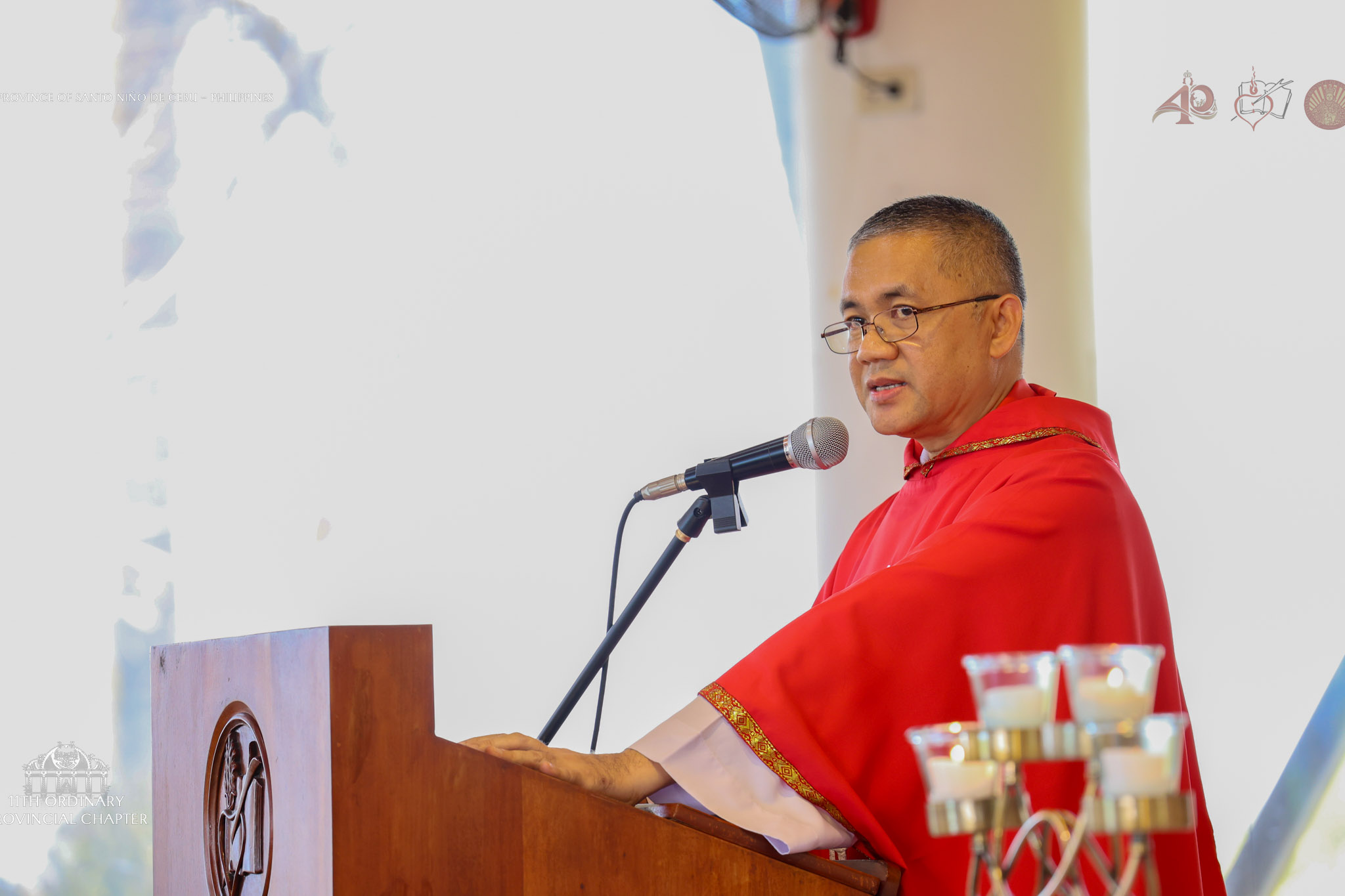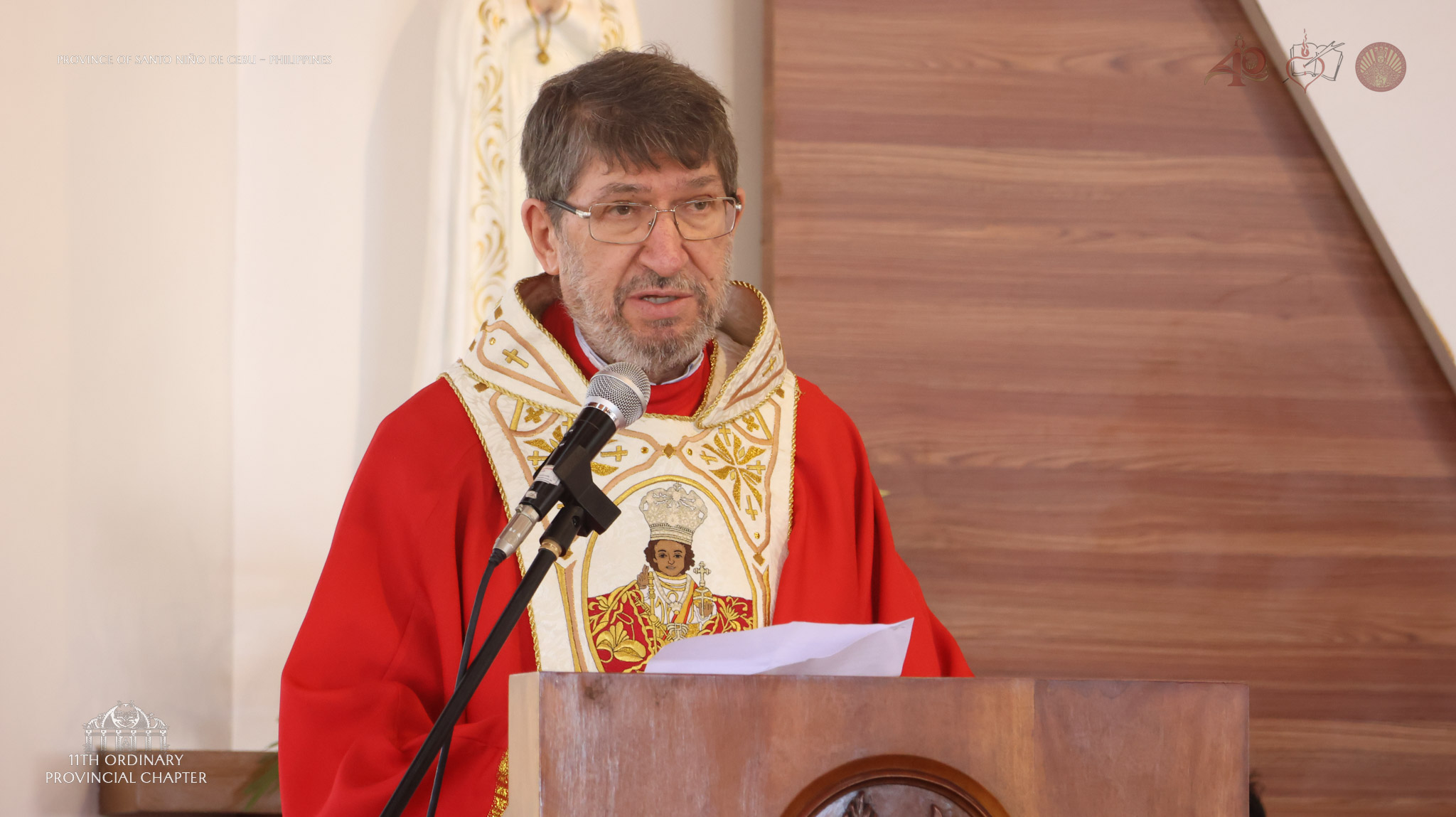The Diocese of Antigonish has a significant missionary element on its past. Coming here, therefore, as a missionary worker myself from the Philippines takes me back to historical recounting of the early beginnings of the diocese in the 17th century. Atlantic Canada had been ministered by French-speaking diocesan and religious missionaries from Quebec.They were the trailblazers in the evangelization of Nova Scotia. They converted the Indian Mi’Kmaq people led by their renowned Chief Membertou to Catholicism.The Antigonish Diocese, originally called the Diocese of Arichat during its establishment in 1844, had been a missionary post during the 17th and 18th centuries. The entire regions of the present diocese were part of the ecclesiastical jurisdiction of the Diocese of Quebec. Missionaries from thislarge diocese continued to visit Cape Breton to minister to the needs of the French (Acadian) communities scattered throughout northeastern Nova Scotia. Antigonish became the seat of the diocese in 1886 when the late Bishop John Cameron moved it from Arichat.
Foreign Clergy in the Diocese
I am currently serving in the Diocese as a foreign religious worker, to use the immigration terminology. Yet, I am a missionary here too, which was similarly the status of most of the priests from Quebec who ministered the Nova Scotian flock in the early days. Today the presence of foreign clergy continues to be a blessing to the local Church. The assistance of foreign priestsis morethan indispensable now because the Diocese of Antigonish, like most North American dioceses,has been experiencing shortage of priests. The Diocese has an aging demographic and it is most notable in the countrysideof Atlantic Canada. Antigonish is being served today by one Filipino, one Indian, and three Nigerian non-incardinated priests.
Changing Ecclesial Realities
The aging population of the region is microcosmically reflected, sadly, on the demographic of the diocesan clergy. Majority of priests in Antigonish belong to or are close to retirement. Others have been retired yet they continue to serve in voluntary basis. Then adding to thehuman resources problemof the clergy is the lack of vocation. Antigonish has three seminarians only for several years now.Last Spring the latest one ordained was a 72-year old man.As a consequence of contributory factors, the Diocese had made painstaking but sometimes unpopular decisions of closing parishesthat were themselves struggling and unsustainable.
Currently, we are undergoing reconfiguration of parishes and deaneries (vicariates): closures for some, amalgamation for many, and rezoning. For many parishioners it had been hurtful and frustrating experiencewitnessing the center of their generational lives—their parish church—being sealed off for good. Nonetheless, the Diocese has kept on praying for guidance and enlightenment, to help all to realize and to accept the fact—the unflinching truth—that the Diocese of Antigonish ismarkedlychanging by virtue of the aging population, thinning church-goers, diminishing parish resources, and declining number of priests. Thus, the permanent diaconate for single or married men is being strengthened,for this is becoming part of the face, the hope and the future of the Canadian Church that the Catholic faithful has to live by.
Personal Adjustment
Many noteworthy things, some practical ones, haveto be learned and unlearnedwhen I begun working in this Diocese in 2014. Being in Nova Scotia in the Maritime region of Canada was a first for me. Hence, there were few “baptisms-of-fire” that I must undergo. One of them was a practical one:winter driving. Cruising the dangerously snow-packed or sometimes iced-slippery highways and provincial roads during snowstorms was something I would never forget. Nonetheless, culturally and environmentally I have easier way of adjusting to theCanadian landscape because of my priorToronto experience. Having gonethrough acclimatization before it becamesimpler for me recentlyto adapt psychologically and physically in Atlantic Canada.
The declining number of active priests is partly key reason why parishes in the Diocese of Antigonish have been undergoing reconfiguration and consolidation. Upon my arrival on the Holy Week of 2014, Bishop Brian Dunn assigned me tothe churches in the east-central part of Cape Breton Island. This is situated in the middle of the island along the eastern coasts of the famous and scenic Bras D’Or Lake, an inland sea in Cape Breton Island. As a newly arrived foreign priest I had to serve as associate pastor to the Vicar General, Fr. Paul Abbass, who is also the Priests’ Personnel director. Lo, and behold, my pastoral work covered an amalgamated seven parishes, with tons of driving: St. Mary’s, Frenchvale, my residence; St. Andrew, Boisdale, St. Barra, Christmas Island, St. Columba, Iona, St. Michael, Baddeck, and the Indian Reserves of Watmagcook (Mary Queen of the World) and Waycobah (Holy Trinity).The furthest among these is the Indian First Nation of Waycobah, which has a back-and-forth driving distance of 220.8 kilometers, and close to three hours of driving altogether! But the pastoral services, like Masses during weekends for all theseparishes were being shared equally by our parish priest and me.
The People of Cape Breton
Cape Bretoners, that included the First Nations Mi’Kmaq people, are by nature easy to get along with: very friendly, jolly, gentle, gracious and welcoming people. Cape Breton had been a melting pot for several nationalities, particularly during the industrial boom in Sydney, Nova Scotia in late 1800s up to mid-1900s. Most of my former parishioners are of Scottish descent. Others have mixed Indian, French, Scottish or Polish blood. The Diocese of Antigonish is generally “a rich tapestry of cultures, cultures, and traditions. Core to the history of the diocese is the presence of the First Nation—the Mi’Kmaq People” (cf. antigonishdiocese website). My encounter with First Nations people has been great learning experience for me. I got to understandgradually their worldview, theirspirituality, traditions and practices which for hundreds of years became interlaced with their Catholic faith.These recent years more immigrants have arrived in northeastern Nova Scotia. The Diocese has welcomed more Filipinos to its various parishes, and that included our Augustinian Contemplative Nuns who have their religious house in Monastery, Nova Scotia. Most Filipinos here work in the food service sector as skilled workers.
My New Assignment and the Future It Holds
Last June 30thIassumed new pastoral responsibilities as a Parish Administrator in one area ofRichmond County.Bishop Dunn assigned me anewto minister to another First Nation of Potletek. Potletek has a chapel only, not a church, dedicated to the first North American Indian saint, Saint Kateri Tekakwitha, who was canonized by Pope Benedict XVI in 2012. Interestingly, within this native community is a Canadian National Historic Site—the Chapel Island, considered by the Mi’Kmaq Indians of Atlantic Canada as a holy place. They have dedicated it to St. Anne, the mother of the Blessed Virgin Mary. In Richmond Deanery, aside from Chapel Island I am in-chargealso of the Parishes of St. John the Baptist, River Bourgeois, Holy Guardian Angels, L’Ardoise, Immaculate Conception, Barra Head, and St. Peter’s, my residence. I am serving two Acadian (French-descent) communities: L’Ardoise and River Bourgeois.The Holy Guardian Angels Church is the parish of our former Assistant General, the Canadian Fr. Michael Blair Martell, O.S.A. Father Martell is currently the parish priest of the Augustinian-founded Sacred Heart Church in King City, Ontario.
Right now the long-term issue that my fellow pastors and I am encountering in ourpastoral work deals first and foremost with the aging segments inour parishes. The maturing population may have grimimplication to the future of faith communities in the region. The other challenge ishow to effectively attract young people back to the Church. Most of my churchgoers are retired and olderpeople. Cape Breton has been struggling with limited employment opportunities. And it isdriving the labor force and young people out of Nova Scotia to western Canada. Consequently, this is reflectedalso in the regular absence of young people in the community and moreover in the church. A lot of the young generation has an indifferent and uncaringattitude towardsreligious matters. Thankfully, yet paradoxically,these youngsters can only be seen during Christmas or Easter; or when they attend baptism, wedding or funeral.

At the end of the day, nonetheless, I always realize that the Good Shepherd knows best and he has the final say on the future of my parishes and the Diocese of Antigonish. The diocese and the aging parishioners at large are currently facing some burning issues and challenges. Yet, their faith is very much dynamic and alive. This gives me a lot of hope. I serve only at God’s will. I cooperate with him to the best of my ability—with all my heart, mind and body as one he entrusted to shepherd his flock in Richmond County.Apparently what is clearer to me is that the future is not mine to care foror even to worry about. It is God’s concern. What Christ is expecting me to do today is simply to: shepherd his flock, take good care of them, and let them feel secure in faith that through me they can constantly experience God’s presence every day of their life’s journey. I know, with fraternal assurance the Lord keeps singing or hummingto my eara song: “Don’t worry, be happy.” And this is pretty cool. It just brings a great difference, vitality and hope to my heart.



